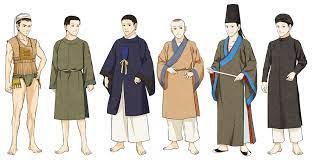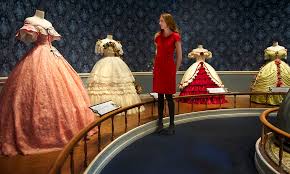Introduction
Fashion is more than just clothing; it’s a reflection of culture, society, and individual expression. In this in-depth exploration of “The Evolution of Fashion: A Historical Overview,” we will journey through centuries of style, tracing the roots of our wardrobe choices and uncovering the significant moments that shaped the fashion industry. Let’s embark on this captivating journey of sartorial transformation.
Ancient Civilizations: Pioneers of Style

Fashion has ancient origins that date back thousands of years. Our fascination with clothing and personal adornment is deeply ingrained in our history and culture. In this section, we’ll delve into the clothing of early civilizations and their contributions to fashion.
From Mesopotamia to Egypt, the Cradle of Civilization: Mesopotamia and Egypt set the stage for fashion evolution. Discover how these ancient cultures used textiles and intricate designs to showcase their status and identity.
The Influence of Classical Greece and Rome: Explore the enduring impact of Greek and Roman fashion, including the draped garments and iconic togas that still inspire modern designers.
Middle Ages: A Tapestry of Textiles
As we progress through history, the Middle Ages stand out as a period of rich textile traditions and evolving silhouettes. In this section, we’ll examine the fashion of this era.
The Elegance of Medieval Europe: Learn about the elaborate garments, corsets, and codpieces that characterized medieval European fashion, highlighting both practicality and luxury.
The Far East: Silk and Sophistication: Discover how Asia, particularly China and Japan, contributed to global fashion with their exquisite silk fabrics and innovative designs.
Renaissance and Enlightenment: A Flourishing of Artistry
The Renaissance and Enlightenment eras were marked by a flourishing of art, science, and, of course, fashion. This section explores the dramatic changes in clothing during this period.
Renaissance: The Age of Opulence: Experience the opulence of Renaissance clothing, characterized by ornate fabrics, ruffs, and elaborate embroidery, reflecting a newfound appreciation for the human form.
Enlightenment: Rationality and Simplicity: Witness the shift towards rationality and simplicity in fashion during the Enlightenment, as philosophers’ ideas influenced clothing choices, favoring comfort and functionality.
Industrial Revolution: Mass Production and New Styles
The 19th century brought about significant changes in fashion with the Industrial Revolution. Discover how mass production and innovation influenced clothing trends.
Victorian Era: Elegance and Restraint: Explore the Victorian era’s distinctive fashion, marked by tightly corseted waists, voluminous skirts, and an emphasis on modesty and etiquette.
The Birth of Haute Couture: Learn how the Industrial Revolution paved the way for haute couture, creating opportunities for designers like Charles Frederick Worth to shine.
20th Century: Revolutionizing Fashion
The 20th century was a period of rapid change in fashion, marked by revolutionary styles and social shifts. Explore the iconic moments that defined this century.
Roaring Twenties: Flappers and Freedom: Delve into the era of the Roaring Twenties, where flapper fashion challenged traditional norms, embracing short hemlines and bold attitudes.
The Swinging Sixties: Hippies and Mini-Skirts: Experience the cultural revolution of the 1960s, where hippie fashion, mini-skirts, and psychedelic prints symbolized a break from convention.
Contemporary Fashion: Trends and Sustainability
In the present day, fashion is a dynamic and global industry. Explore the latest trends and the growing importance of sustainability in clothing production.
Fast Fashion vs. Sustainable Fashion: Learn about the environmental and ethical concerns surrounding fast fashion and discover sustainable alternatives for conscientious consumers.
Inclusivity in Fashion: Explore how the fashion industry is becoming more inclusive, embracing diverse body types, ethnicities, and genders, reflecting the changing values of society.
FAQs
Fashion serves as a cultural mirror, reflecting societal values, technological advancements, and individual expression throughout history. It provides insights into the evolution of human society.
Ancient civilizations introduced textiles, techniques, and styles that continue to inspire modern fashion designers. Their contributions laid the foundation for the clothing we wear today.
Innovation, particularly during the Industrial Revolution, led to mass production and the democratization of fashion. It allowed for greater accessibility to stylish clothing.
Sustainability is crucial to reduce the environmental impact of the fashion industry. It promotes responsible production, ethical practices, and a more conscientious approach to clothing consumption.
The fashion industry has made strides in embracing diversity by featuring models of various ethnic backgrounds, body types, and gender identities in runway shows and campaigns.
The 20th century saw remarkable fashion moments, including the Roaring Twenties with its flapper style and the Swinging Sixties with the rise of mini-skirts and counterculture fashion.
Conclusion
“The Evolution of Fashion: A Historical Overview” is a captivating journey through time, showcasing the profound impact of clothing on our culture and identity. From the intricate textiles of ancient civilizations to the sustainable fashion movement of today, fashion remains an ever-evolving expression of who we are and what we value.







